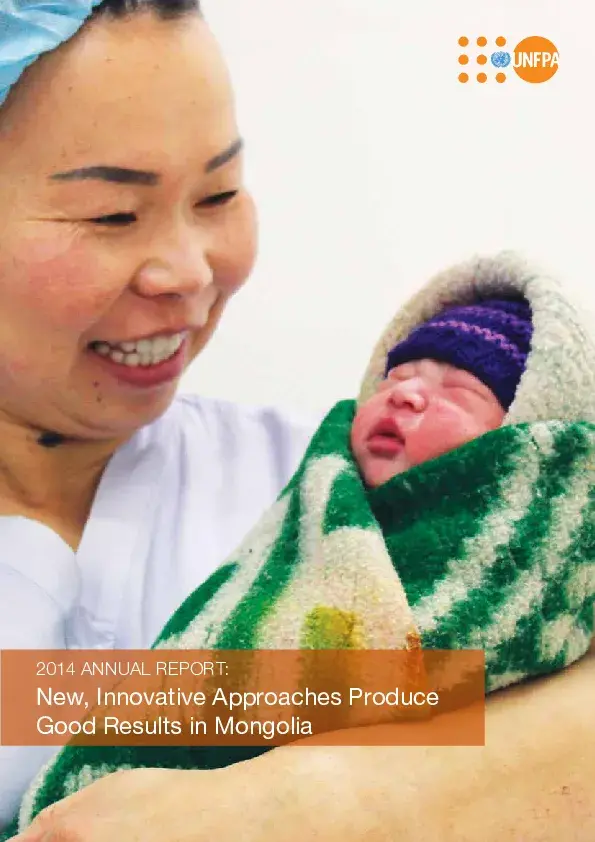The Government of Mongolia and United Nations Population Fund (UNFPA) are implementing its 5th-Country Programme in Mongolia from 2012 until 2016. The programme was adjusted in mid-2014 to align it to Mongolia's priorities as a middle-income country and the UNFPA's new Strategic Plan 2014-2017, based on the results of the independent mid-term review of the programme.
UNFPA is working in four key areas: Population Dynamics, Sexual and Reproductive Health and Rights, Youth Development and Gender Equality. The population and development programme assists the Government in the collection, analysis and use of population data for decision and policy-making. The sexual and reproductive health and rights programme strengthens access, utilization and quality of sexual and reproductive health services with the primary goal to reduce maternal and newborn deaths.
The youth programme promotes youth empowerment and resilience, particularly through improving the life skills of young people. The gender programme advocates and generates support for improving gender equity and empowerment of women, with a specific focus given on reducing gender-based violence.
UNFPA has partnered with Mongolia since the late 1970's, delivering extensive changes in the focus areas. Through Government, private sector and civil society partnerships, initiatives include technical assistance for the development and revision of government policies, improving sexual and reproductive health services and rights, capacity development, brokerage of partnerships and supplying medical equipment, materials and contraceptives. These programmes have contributed to more than halving maternal and the newborn deaths from 1990's levels and creation of a robust framework for population data collection and effective utilisation, amongst other improvements in the areas of gender equality and youth development.


